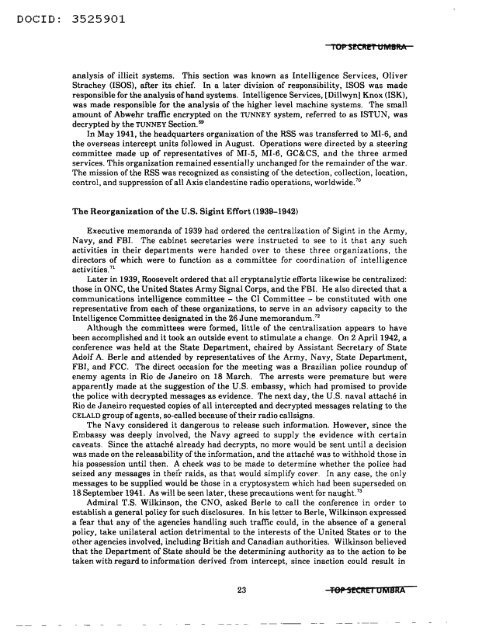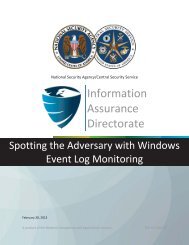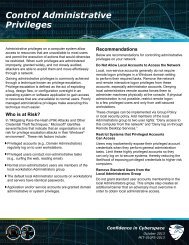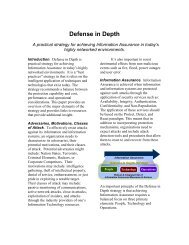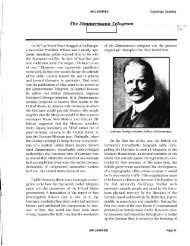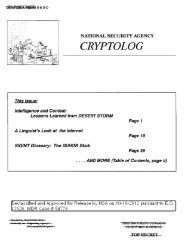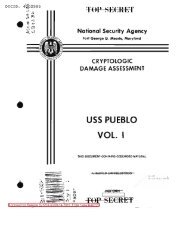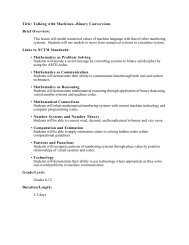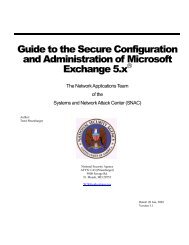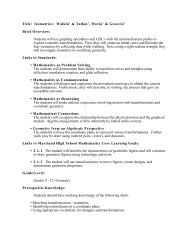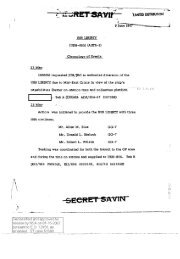German Clandestine Activities in South America in World War II
German Clandestine Activities in South America in World War II
German Clandestine Activities in South America in World War II
You also want an ePaper? Increase the reach of your titles
YUMPU automatically turns print PDFs into web optimized ePapers that Google loves.
DOCID: 3525901<br />
TOP S!CRI!T tJMBItA<br />
analysis of illicit systems. This section was known as Intelligence Services, Oliver<br />
Strachey (lSOS), after its chief. In a later division of responsibility, ISOS was made<br />
responsible for the analysis ofhand systems. Intelligence Services, [Dillwyn) Knox (lSK),<br />
was made responsible for the analysis of the higher level mach<strong>in</strong>e systems. The small<br />
amount of Abwehr traffic encrypted on the TUNNEY system, referred to as ISTUN, was<br />
decrypted by the TUNNEY Section.69<br />
In May 1941, the headquarters organization of the RSS was transferred to MI-6, and<br />
the overseas <strong>in</strong>tercept units followed <strong>in</strong> August. Operations were directed by a steer<strong>in</strong>g<br />
committee made up of representatives of MI-5, MI-6, GC&CS, and the three armed<br />
services. This organization rema<strong>in</strong>ed essentially unchanged for the rema<strong>in</strong>der of the war.<br />
The mission of the RSS was recognized as consist<strong>in</strong>g of the detection, collection, location,<br />
control, and suppression ofall Axis clandest<strong>in</strong>e radio operations, worldwide. 70<br />
The Reorganization ofthe U.S. Sig<strong>in</strong>t Effort (1939-1942)<br />
Executive memoranda of 1939 had ordered the centralization of Sig<strong>in</strong>t <strong>in</strong> the Army,<br />
Navy, and FBI. The cab<strong>in</strong>et secretaries were <strong>in</strong>structed to see to it that any such<br />
activities <strong>in</strong> their departments were handed over to these three organizations, the<br />
directors of which were to function as a committee for coord<strong>in</strong>ation of <strong>in</strong>telligence<br />
activities. 71<br />
Later <strong>in</strong> 1939, Roosevelt ordered that all cryptanalytic efforts likewise be centralized:<br />
those <strong>in</strong> ONC, the United States Army Signal Corps, and the FBI. He also directed that a<br />
communications <strong>in</strong>telligence committee - the CI Committee - be constituted with one<br />
representative from each of these organizations, to serve <strong>in</strong> an advisory capacity to the<br />
Intelligence Committee designated <strong>in</strong> the 26 June memorandum. 72<br />
Although the committees were formed, little of the centralization appears to have<br />
been accomplished and it took an outside event to stimulate a change. On 2 April 1942, a<br />
conference was held at the State Department, chaired by Assistant Secretary of State<br />
Adolf A. Berle and attended by representatives of the Army, Navy, State Department,<br />
FBI, and FCC. The direct occasion for the meet<strong>in</strong>g was a Brazilian police roundup of<br />
enemy agents <strong>in</strong> Rio de Janeiro on 18 March. The arrests were premature but were<br />
apparently made at the suggestion of the U.S. embassy, which had promised to provide<br />
the police with decrypted messages as evidence. The next day, the U.S. naval attache <strong>in</strong><br />
Rio de Janeiro requested copies of all <strong>in</strong>tercepted and decrypted messages relat<strong>in</strong>g to the<br />
CELALD group ofagents, so-called because oftheir radio callsigns.<br />
The Navy considered it dangerous to release such <strong>in</strong>formation. However, s<strong>in</strong>ce the<br />
Embassy was deeply <strong>in</strong>volved, the Navy agreed to supply the evidence with certa<strong>in</strong><br />
caveats. S<strong>in</strong>ce the attache already had decrypts, no more would be sent until a decision<br />
was made on the releasability of the <strong>in</strong>formation, and the attache was to withhold those <strong>in</strong><br />
his possession until then. A check was to be made to determ<strong>in</strong>e whether the police had<br />
seized any messages <strong>in</strong> their raids, as that would simplify cover. In any case, the only<br />
messages to be supplied would be those <strong>in</strong> a cryptosystem which had been superseded on<br />
18 September 1941. As will be seen later, these precautions went for naught. 73<br />
Admiral T.S. Wilk<strong>in</strong>son, the CNO, asked BerIe to call the conference <strong>in</strong> order to<br />
establish a general policy for such disclosures. In his letter to Berle, Wilk<strong>in</strong>son expressed<br />
a fear that any of the agencies handl<strong>in</strong>g such traffic could, <strong>in</strong> the absence of a general<br />
policy, take unilateral action detrimental to the <strong>in</strong>terests of the United States or to the<br />
other agencies <strong>in</strong>volved, <strong>in</strong>clud<strong>in</strong>g British and Canadian authorities. Wilk<strong>in</strong>son believed<br />
that the Department of State should be the determ<strong>in</strong><strong>in</strong>g authority as to the action to be<br />
taken with regard to <strong>in</strong>formation derived from <strong>in</strong>tercept, s<strong>in</strong>ce <strong>in</strong>action could result <strong>in</strong><br />
23 Tep SI!CRE i UMBRA


